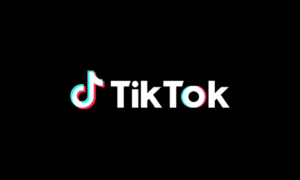Zhan Isaakian, a brilliant self-taught software developer, has been programming since he was a teenager.
By his early 20s, he already was an experienced creator of multicultural social networks. His portfolio includes projects in Afghanistan, before the Taliban took control; and in Russia, where social media is the opposition’s last lifeline. We talked to Zhan about the challenges of programming for different cultures and multiple languages.

How did you start developing social media networks?
I’ve been programming since I was 14 years old, trying to recreate existing platforms, such as Facebook.
I experimented with database technology and tried to build my own messenger. Because I was so focused on becoming a better coder, I’ve been actively socializing with other young developers on various IT forums and chats. That’s how I got my first job.
So you just met your employers online?
Yes, can you believe it? I was 17 years old at the time and lived in Armenia, my native country. At some point, the founder of a new Afghan social network, KabulJan, approached me online and asked if I’d be interested in working with them. I thought the job offer was a prank by some other teenage guy. I made sure we were both in on the joke.
To my surprise, it turned out the offer was legit, and they hired me. I think my age was an advantage: I had more flexibility, a fresh eye, and was able to think creatively. So I started working with KabulJan remotely and then, during my summer holidays, from the company office in Moscow, Russia.
The owners mostly communicated in Farsi but, because Armenian, my native language, is so close, I was able to understand them. The project lasted until 2016, when the Taliban took over all of the country’s social networks.
Working on my first social media project, I learned a lot, including how internal services operate, how music search works, etc. And, most importantly, we had to support six languages. It was a unique experience for a developer and gave me a great career start.
What are the main goals of social networks in developing countries?
Social networks can help new users join the global web in order to safely cross the bridge to digital equality. For example, according to surveys, less than 20% of the Afghan population uses the Internet. The digital divide — the unequal access to technology – is a global problem and is not unique to the developing world. Unfortunately, it also exists in some communities in the U.S.
When the unconnected start to connect, they don’t understand the basic principles of cybersecurity. They might click on a suspicious link when some fake sheik offers them a million dollars or inadvertently sends their password to a stranger. For new users in developing countries, social networks become a main communication channel.
What are the biggest challenges for multilingual social media?
As far as direct translation is concerned, interpreters have no idea of the context. In fact, some basic linguistic concepts are not transferable to other languages. For example, the way you tag people in English doesn’t work in Armenian. Developers such as myself, with a mixed cultural background, know about this.
That’s why diversity in programming is so important. A developer who only speaks English has no idea that there are different conjugations or ways to structure a sentence in other languages. It’s also important to include minorities and people of mixed cultural backgrounds in the process of development. Otherwise social media only benefits people of a certain class and ethnicity.
We are already seeing issues with face recognition algorithms: according to the U.S. government’s report, the systems generally work best on middle-aged white men’s faces, and not so well for people of color, women, children, or the elderly.
Buolamwini and Gebru’s 2018 research concluded that some facial analysis algorithms misclassified Black women nearly 35 percent of the time. The reason is that minority developers haven’t been included in the process of developing these algorithms.
Symbolism and the meaning of different trees, flowers, etc., also vary in different cultures. Another example is the gaming industry, where sometimes you have to completely change everything to enter a different market.
What issues do developers have while programming for social media platforms?
They don’t understand the importance and potential of social media networks. They think they are creating an ordinary website, and ignore the fact that a huge number of users will be interacting with the platform.
It will be growing, and becoming multilingual, such as Facebook, YouTube, TikTok, and Instagram. As a developer you should be flexible and create a system that can adapt to any changes. It’s not as simple as rewriting an old code.
The number of people using social media worldwide is projected to increase from the current four billion to almost six billion in 2027. Most of this growth is driven by the increasing use of mobile devices, in particular, in Asia, Latin America, and Africa. Multiculturalism and the multilingual approach is important for all social media companies looking to tap into this market.


































